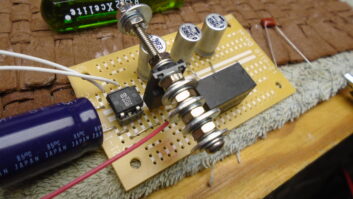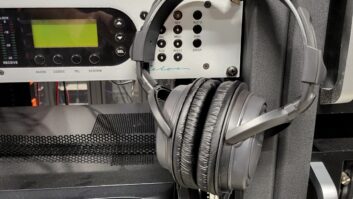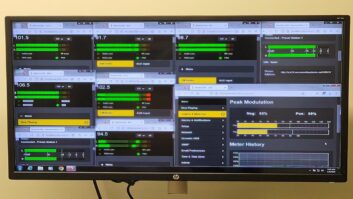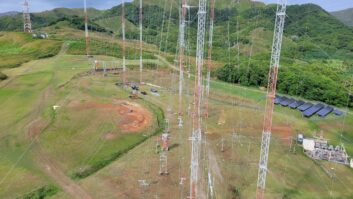A DIY Approach to Site Security
Jun 1, 2011 1:00 AM, By Kevin McNamara
As long as we have had remote transmitter sites, we have had the issue of keeping unauthorized people off the property. It wasn’t really a problem when the sites were manned (anyone remember that?); however, the advent of remote control systems made that luxury disappear in the late 1960s. That was a different time: Generally people showed up to act on a testosterone- (or liquor-) induced idea that they would climb the tower, rather than plot to destroy the site. Here we are, post 9/11, in one of the worst economies the U.S. has experienced in years. Copper prices are more than $4 per pound and your remote site represents a treasure chest to some people.
Keeping a site secure fulfills a number of objectives such as 1) Protecting the general public from potentially hazardous situations (i.e. electrocution, non-ionizing radiation, falling objects, etc.), 2) Deterring unauthorized people from climbing (or getting near) the tower(s), 3) Keeping exposed/exterior equipment (HVAC, power lines, coaxial cables, ground systems, guy wires, etc.) protected from damage and/or theft, 4) Properly securing all buildings.

Remote sites are an attractive target for copper thieves.
Since the events of 9/11 there has been a great deal of focus on the security of remote wireless sites used for public safety, cellular and broadcast facilities. Various federal and state agencies and committees have created guidelines and checklists to help licensees secure their infrastructure, including remote/unmanned tower sites. One such committee was formed under the FCC in 2002, The Media Security and Reliability Council (MSRC). According to the mission statement posted on its website, the committee exists: “To prepare a comprehensive national strategy for securing and sustaining broadcast and MVPD facilities throughout the United States during terrorist attacks, natural disasters and all other threats or attacks nationwide.”
The MSRC’s website has some great information, including checklists that will help you assess a facility’s risk to a number of security threats.
Obviously the main components of keeping a site secure are adequate fencing, barbed wire, solid doors, locks, good lighting and alarms. But these keep out the “casual” thief. Anyone with a strong desire (and enough time) to gain access will breach your compound, so the question is really more of how to minimize theft or damage to the critical components of the transmission system, and what is the best way to monitor the site? This is also a problem faced by cellular carriers, who operate thousands of remote sites nationally. Interestingly enough, it isn’t just the sites that are in the middle of nowhere that get vandalized; they experience more theft at sites in urban areas, including those on rooftops. Here are a few practical tips that you can use at your sites.
— continued on page 2
A DIY Approach to Site Security
Jun 1, 2011 1:00 AM, By Kevin McNamara
Outdoor components
The next time you replace your ground wires and other copper terminations, consider using silver- or tin-plated components. Apparently copper thieves tend to stay away from metals that look like aluminum. You get the same performance as using copper. This approach has proven to be an effective deterrent and is very popular with communications systems operators.
External HVAC compressor units, especially the ground-mounted variety, are a favorite target of copper thieves. There’s not a lot you can do here except to get the units mounted on a roof, if possible. If you need to replace units in the future, consider commercial wall-mounted systems. They tend to be too much work to remove and are less desirable.
If you are building a new site, be sure to design the building so the coax entry ports and ice bridges are elevated as high as possible. On existing shorter runs, coax can be mounted inside a cable trough with a locking cover. If the entry point for the coax is lower, you can have a custom dog house fabricated. The dog house is essentially an enclosure large enough to accommodate the number of cables and allow required bend radius. These are generally attached directly to an exterior wall or roof, covering the entry port on one side and connected to the enclosed cable trough on the other, ideally keeping the cables unexposed and protected.
Monitoring the site
Most sites utilize the remote control system to alert an operator that a door is open or a proximity sensor has gone off. While it might let you know someone has stopped by, it doesn’t really tell what is actually occurring. The better solution is to implement a digital video recording (DVR) system that records several cameras, along with date/time stamping. These systems have become very affordable (less than $1000, with cameras) and include some very cool features such as motion detection (through the camera), Cameras can be viewed remotely, including on 3G smart phones, and can initiate notifications via voice, text or email.
If you feel more ambitious, have a PC lying around and have a little Linux experience, Zoneminder is a free open-source surveillance application that offers several powerful features not found in the lower-cost systems. For example, you could utilize an air-card at the remote site to enable some broadband access and view cameras in real-time, if the site isn’t located near an area that offers traditional broadband cable, telco or wireless services. Zoneminder also supports standard video, IP cameras and X10 devices. Zoneminder is also flexible enough to be configured for multisite operation if desired.
McNamara is president of Applied Wireless, Cape Coral, FL.
June 2011
The 2011 NAB Show in review, including the Pick Hits, Editor’s Picks, new products and Photo Blog; KTSC gets an upgrade; and Field Reports on the Blue Mikey and IK Multimedia iRig Mic….












